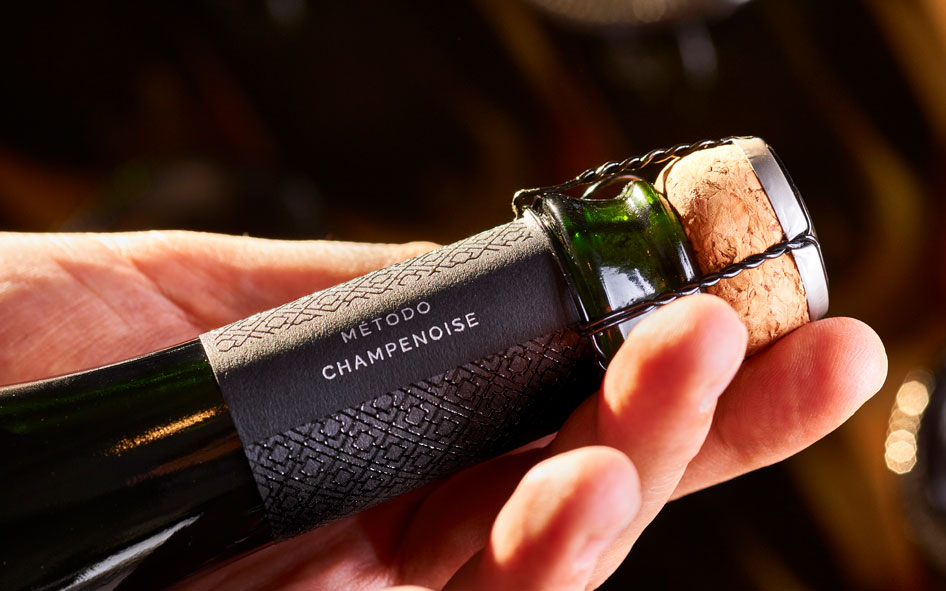Sparkling wines Background:
July 9, 2020

In the world of wine, sparkling wines have two things in common with still wines: sugar and yeast. These two essential ingredients are what make the refreshing bubbles.
There are many styles for making sparkling wine. The most famous and popular is the Champenoise method, created by Dom Perignon near the city of Epernay in 1668, in the region of Champagne.
In broad terms, the champenoise method consists of two alcoholic fermentations. The first fermentation produces a still wine. This wine is bottled and the second fermentation takes place in the bottle, adding sugar and yeast, that will then introduce CO2 into the wine.
After a few weeks, months or years, depending on the aging, the wine is disgorged to remove the yeasts, and the bottle receives its final cork.
The Champenoise or Traditional Method, STEP BY STEP
1. Base wine
One of the most important steps when making a sparkling wine is getting a good “base wine”. The wine must be fresh and fruity, with a maximum alcohol of 11º, correct acidity, and a small SO2 presence. The base wine can be a young wine or a wine that has been aged in barrels; it can be white, red, or rosé, or a “blanc de noir,” meaning a white wine made from red grapes.
2. Second fermentation
Once the base wine has been made, it must be bottled with the tirage, which contains sugars, citric acid, selected yeasts, and a part of the base wine. Within the bottle, thanks to the presence of the yeasts and sugars, a second fermentation begins. It is during this step that the carbon dioxide is produced slowly, forming fine bubbles.
3. Riddling
Once the second fermentation has finished, the wine will age with the lees. The bottles are placed on a rack with the form of an upside V on the neck of the bottle. During the next 21 days, the bottle is turned 1/8, three times a day in order to begin inclining the neck of the bottle. When the bottle reaches an inverted position, they say it’s “on point”. With this technique all of the sediment from the second fermentation settle in the neck of the bottle. It also aids in the integration of the wine with the carbon dioxide.
4. Disgorging
Once the riddling has finished, the neck of the bottle is placed in freezing liquid (-25ºC) so that the yeasts and other solids form a solid block. The neck of the frozen bottle is cut in order to remove all of the remains. The process is done at least 9 months after the end of the second fermentation.
5. Adding Dosage
After the disgorging, the sparkling wine bottle is filed with a dosage, which can be comprised of more sparkling wine, must, or a blend of different wines. The sugar added in the dosage is what will characterize the sparkling wine as brut nature (0–3 g/L of residual sugar, with no dosage), extra brut (less than 6 g/L), brut (6–15 g/L), extra dry (12–20 g/L), sec (17–35 g/L), demi-sec (35–50 g/L), and sweet or doux (more than 50 g/L).

